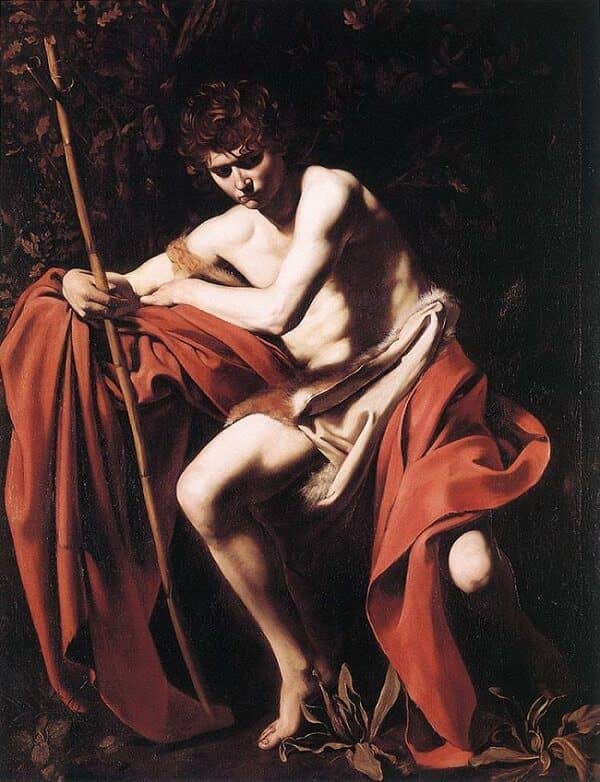John the Baptist, 1604 by Caravaggio

According to Baglione, this work was painted for Ottavio Costa, who had a copy made for his family chapel in Cosciente in Liguria, where it still exists. The original was mentioned in the Costa inventory of 1639 and then disappeared. It reappeared in an English private collection in 1844 and was acquired during the early 1950s by th Kansas City museum.
Cardinal Baronius is quoted as having told Pope Clement VIII, whom he confessed every night, that "it is only possible to judge the conversion of a sinner by external signs." Saint John the Baptist was a prophet, not a sinner. But Caravaggio in this, his most sober and moving devotional image of the saint, has been remarkably effective in using subtle external signs to reveal personality. It has something of Michelangelo's terribilita; Saint John is as downcast as the Jeremiah and his pose is a composite of prophets from the Sistine ceiling. Its tense energy underscores Saint John's singularly high-strung nature. A number of devices emphasize his nervous force: the diagonal position of the body, reiterated by the staff (which has an added crosspiece transforming it into a crucifix) and opposed by the diagonals in the shoulders and across the knees; the restless position as if he were about to spring up; the sharp contrast between the lighted areas and the broken arc of shadow disrupting the figure from the cheek to his right ankle; the twisting draperies; and the flutter of leaves in the background. And the downward regard, the deeply shadowed eyes, and the somber expression reveal the profundity of his thought. He is a young Moses, passionate, a zealot, nearly bursting with vitality, but as much a contemplative, even a melancholic, as an active man. The emphasis is on his inner life, his seriousness, his spirit; he is not a mere symbol, but a man, an extraordinary visionary. Roberto Longhi believed that Caravaggio intended to suggest the moon as the picture's light source. And perhaps this Saint John is a little mad - with the singleness of purpose of a man driven by his sense of mission.
















